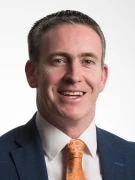
Minister Damien English with Ashley Dunne, Koby Fowler and their teacher Mary Cook-McCarthy from Newtown National School, Newtown, Enfield, Co Meath. Ashley and Koby were runners up at the Intel Mini Scientist National Final with their project “How To Fight Kids Obesity” in Trinity College Dublin.
Minister Damien English with Ashley Dunne, Koby Fowler and their teacher Mary Cook-McCarthy from Newtown National School, Newtown, Enfield, Co Meath. Ashley and Koby were runners up at the Intel Mini Scientist National Final with their project “How To Fight Kids Obesity” in Trinity College Dublin.
Newtown National School, Enfield, represented Meath at the prestigious Intel Mini Scientist Exhibition in the Science Gallery of the Naughton Institute of Trinity College Dublin. Meath West TD and Minister for Skills, Research and Innovation Damien English was on hand to preside over the Awards Ceremony and meet the pupils, teachers and parents involved.
Speaking at the event, Minister English stated: “I want to commend all of the students who took part in the Intel Mini Scientist Competition, especially Newtown National School from near Enfield who earned the Grand Finalist runners-up position for their project ‘How to Fight Kid’s Obesity’.”
“The record breaking success of the event this year speaks for itself. International studies show that when students compete in events like this, not only does their performance in
examinations improve, but so too does their confidence in their ability to do science and the enjoyment they derive from participating.”
Minister English continued: “I would like to acknowledge the work of the teachers in Newtown National School, and nationwide. Without their voluntary contribution events like the Intel Mini Scientist Exhibition simply would not take place. Your work in encouraging your students to participate in the first instance, listening to their ideas for projects, ensuring that they remain on track, and facilitating research, both within and outside of the school, are all key in ensuring that the projects reach completion. Participation in events
such as this ensures that learning does not end at the classroom door.
“It makes the economically vital Science, Technology, Engineering and Maths subjects more relevant to young peoples’ lives, and exposes them to the excitement associated with discovering new ways of thinking and learning. In exposing students to such experiences, you embrace what is, according to Einstein, the supreme art of the teacher; to awaken
joy in creative expression and knowledge.” Concluded Minister English
The Intel Mini Scientist Exhibition is a competition for Primary school students in which they develop science related projects which are exhibited at fairs within their own schools. Winning projects selected at this school level exhibition then go on to take part in the Mini Scientist Regional Final event with the possibility of continuing on to the Grand Final event. The competition, which is open to 4th, 5th and 6th class students, supports the Primary Science curriculum, is a great way to encourage enthusiasm and practical learning in the area of science. This year saw a record-breaking number of entries, with just over 5,500 students from 92 schools participating, making this Ireland’s largest primary school science fair programme.








